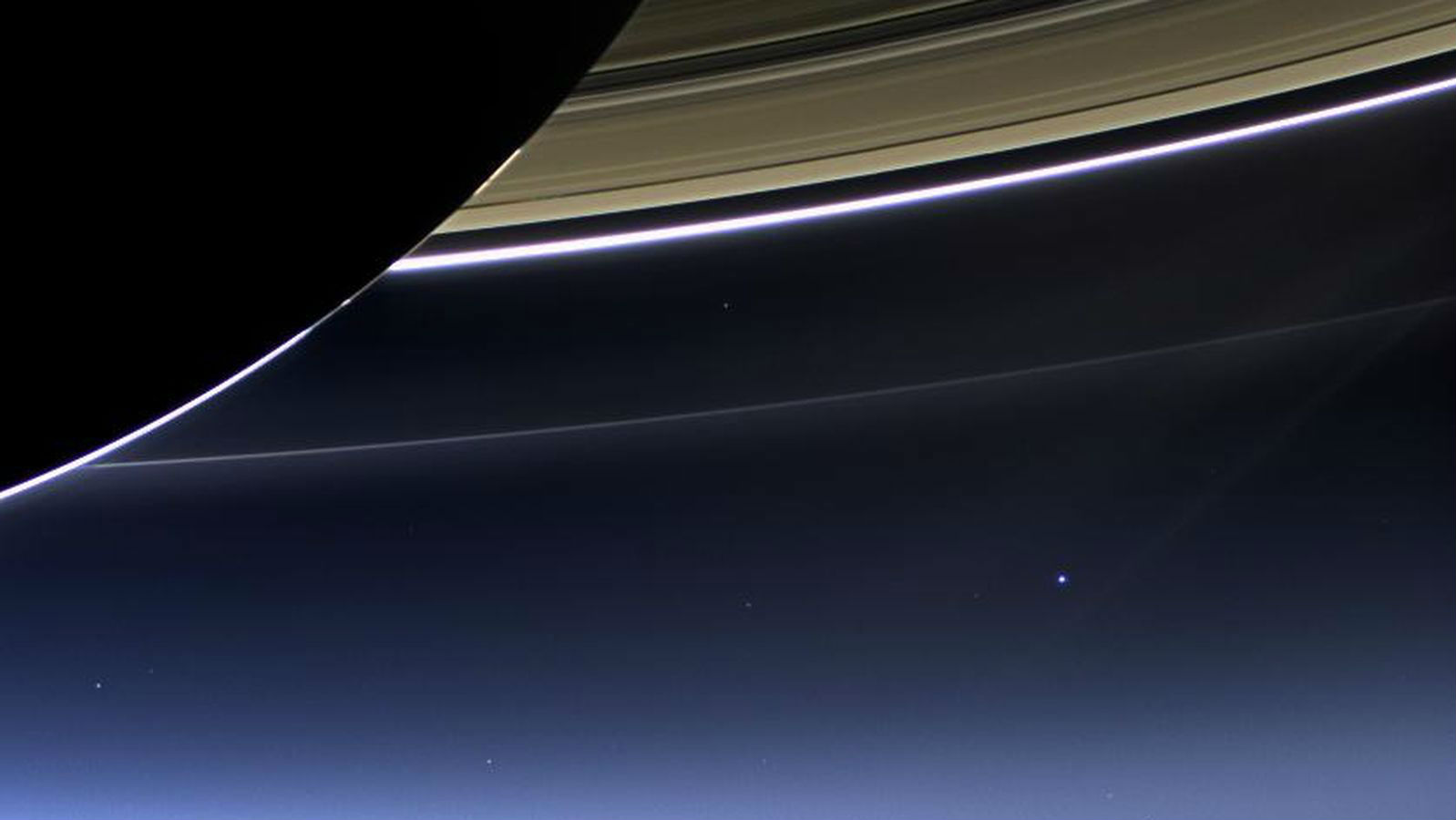Nasa satellite brushes Saturn's atmosphere
Spacecraft completes first ultra-close dive near planet as end of its mission approaches

Nasa's Cassini spacecraft skimmed Saturn's atmosphere for the first time today, hovering 1,000 miles above its clouds.
The swing-by, the first of five planned ultra-close passes, is part of the exploration of the space between the planet and its rings. By dipping down far enough to skim Saturn's atmosphere, scientists hope samples of collected gases will reveal more about the materials that comprise the planet's interior, the BBC reports.
The closest approach will bring the spacecraft 1,010-1,060 miles above the cloud tops, the Daily Mail says.
The Week
Escape your echo chamber. Get the facts behind the news, plus analysis from multiple perspectives.

Sign up for The Week's Free Newsletters
From our morning news briefing to a weekly Good News Newsletter, get the best of The Week delivered directly to your inbox.
From our morning news briefing to a weekly Good News Newsletter, get the best of The Week delivered directly to your inbox.
Cassini, a joint venture between US, European and Italian space agencies, was launched from Florida's Cape Canaveral in 1997.
It has since amassed "a remarkable list of achievements", says Nasa, including the discovery of habitable environments on two of Saturn's moons, Enceladus and Titan.

Three of Saturn's moons - Tethys, Enceladus, and Mimas - are captured in this shot by Cassini
A free daily email with the biggest news stories of the day – and the best features from TheWeek.com

Cassini captures Saturn's rings and planet Earth in the same frame
The spacecraft's data-gathering days are numbered because its fuel is running out, however, so NASA's plan is to set it on a one-way mission into Saturn's atmosphere on 15 September to dispose of the spacecraft in the planet's upper atmosphere.
The dramatic grande finale will see Cassini "burn up like a meteor and become part of the planet itself," ABC News reports.
-
 Metaverse: Zuckerberg quits his virtual obsession
Metaverse: Zuckerberg quits his virtual obsessionFeature The tech mogul’s vision for virtual worlds inhabited by millions of users was clearly a flop
-
 Frank Gehry: the architect who made buildings flow like water
Frank Gehry: the architect who made buildings flow like waterFeature The revered building master died at the age of 96
-
 Is MAGA melting down?
Is MAGA melting down?Today's Big Question Candace Owens, Tucker Carlson, Laura Loomer and more are feuding
-
 How Bulgaria’s government fell amid mass protests
How Bulgaria’s government fell amid mass protestsThe Explainer The country’s prime minister resigned as part of the fallout
-
 Femicide: Italy’s newest crime
Femicide: Italy’s newest crimeThe Explainer Landmark law to criminalise murder of a woman as an ‘act of hatred’ or ‘subjugation’ but critics say Italy is still deeply patriarchal
-
 Brazil’s Bolsonaro behind bars after appeals run out
Brazil’s Bolsonaro behind bars after appeals run outSpeed Read He will serve 27 years in prison
-
 Americans traveling abroad face renewed criticism in the Trump era
Americans traveling abroad face renewed criticism in the Trump eraThe Explainer Some of Trump’s behavior has Americans being questioned
-
 Nigeria confused by Trump invasion threat
Nigeria confused by Trump invasion threatSpeed Read Trump has claimed the country is persecuting Christians
-
 Sanae Takaichi: Japan’s Iron Lady set to be the country’s first woman prime minister
Sanae Takaichi: Japan’s Iron Lady set to be the country’s first woman prime ministerIn the Spotlight Takaichi is a member of Japan’s conservative, nationalist Liberal Democratic Party
-
 Russia is ‘helping China’ prepare for an invasion of Taiwan
Russia is ‘helping China’ prepare for an invasion of TaiwanIn the Spotlight Russia is reportedly allowing China access to military training
-
 Interpol arrests hundreds in Africa-wide sextortion crackdown
Interpol arrests hundreds in Africa-wide sextortion crackdownIN THE SPOTLIGHT A series of stings disrupts major cybercrime operations as law enforcement estimates millions in losses from schemes designed to prey on lonely users